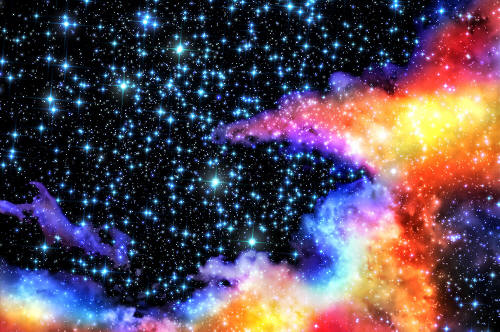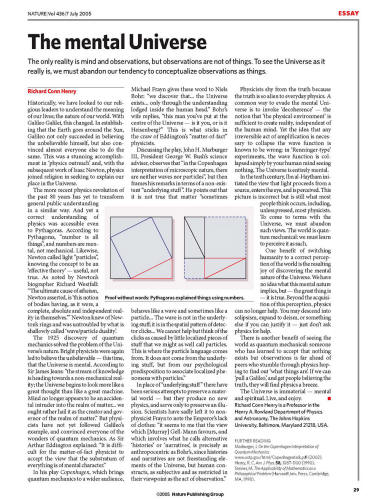|
from
Collective-Evolution Website
is like looking in the radio for the announcer." Nassim Haramein director of research for the
He is basically saying that the immaterial 'substance' of consciousness is directly intertwined with what we perceive to be our physical material world in some sort of way, shape or form, that consciousness is required for matter to be, that it becomes after consciousness… and he's not the only physicist to believe that.
Scientists have been urging the mainstream scientific community, which today is littered with scientific fraud and industry influence as well as invention secrecy, to open up to a broader view regarding the true nature of our reality.
Not long ago, a group of internationally recognized scientists came together to stress this fact and how it's overlooked by the mainstream scientific community.
It's 'post-material' science, an area of study dealing with the 'non-physical' realm, and it's challenging the modern scientific worldview of materialism that's dominated mainstream science.
The idea that matter is not the reality is finally starting to gain some merit.
The summary of this report presented at the International 'Summit on Post-Materialist Science' says,
MIT's Max Tegmark, a theoretical physicist at the Massachusetts Institute of Technology in Cambridge, is one of the latest to attempt explaining why he believes consciousness is a state of matter.
He believes that consciousness arises out of a certain set of mathematical conditions, and that there are varying degrees of consciousness - just as certain conditions are required to create varying states of vapor, water, and ice.
As PBS emphasized,
Tegmark describes this as "perceptronium," which he defines as the most general substance that feels subjectively self-aware and this substance should not only be able to store information, but do it in a way that form a unified, indivisible, whole.
This new way of thinking about consciousness has been spreading throughout the physics community at an exponential rate within the past few years.
Considering consciousness as an actual state of matter would be huge, considering the fact that modern day definitions of matter require a substance to have mass, which consciousness does not have.
What it does have, however, is some sort of effect on our physical material world, and the extent of this effect and how far it goes is the next step for science.
The quantum double slit experiment is a very popular experiment used to examine how consciousness and our physical material world are intertwined. It is a great example that documents how factors associated with consciousness and our physical material world are connected in 'some' way.
One potential revelation of this experience is that,
A paper published in the peer-reviewed journal Physics Essays (Consciousness and the Double-Slit Interference Pattern - Six Experiments) by Dean Radin, PhD, explains how this experiment has been used multiple times to explore the role of consciousness in shaping the nature of physical reality.
The study found that factors associated with consciousness "significantly" correlated in predicted ways with perturbations in the double slit interference pattern.
For a physicist to brush off the fact that understanding consciousness is necessary for the advancement and understanding of the nature of our 'reality' is not as common as it used to be but, despite the empirical success of quantum theory, even the suggesting that it could be true as a description of our reality is greeted with harsh cynicism, incomprehension and even anger.
R.C. Henry, Professor of Physics and Astronomy at Johns Hopkins University wrote in a 2005 publication for the journal Nature:
|



